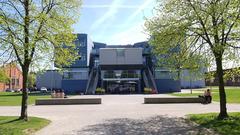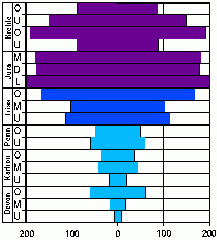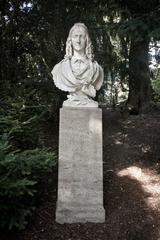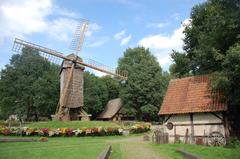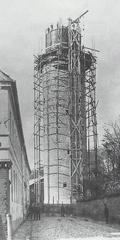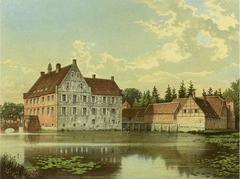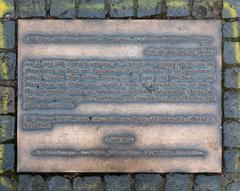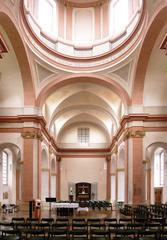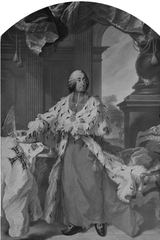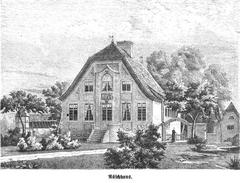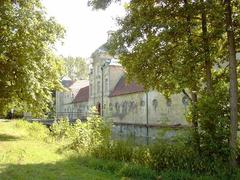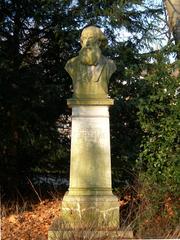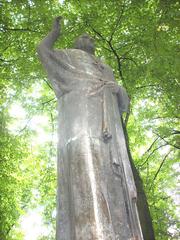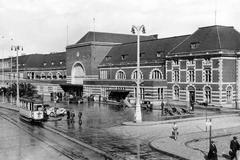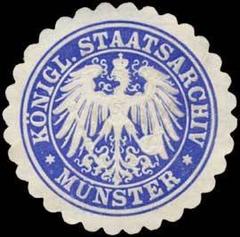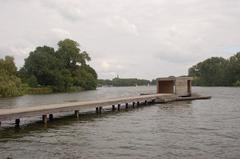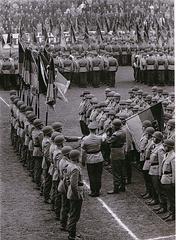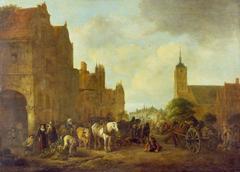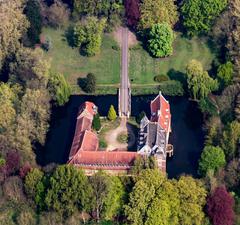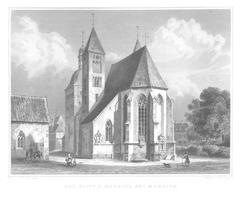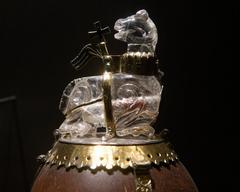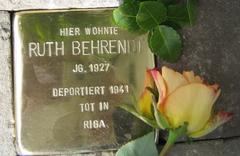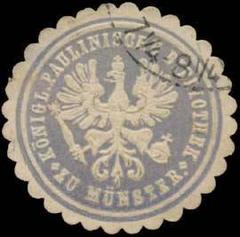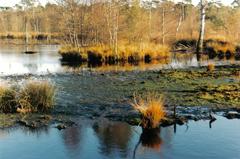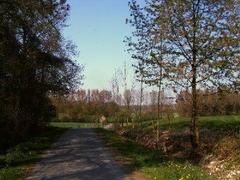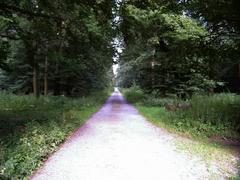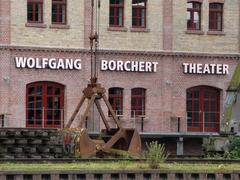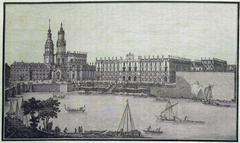Eulenturm Münster: Visiting Hours, Tickets, and Historical Site Guide
Date: 14/06/2025
Introduction
Standing in the heart of Münster’s historic Old Town, the Eulenturm—meaning “Owl Tower”—is a remarkable relic of medieval architecture and urban defense. Dating back to the 14th or 15th century, this cylindrical stone tower once formed part of the city’s fortifications, offering both protection and a symbol of vigilance. Today, the Eulenturm is not only a preserved historical monument but also a cultural and ecological landmark, reflecting Münster’s rich past and vibrant urban life. This guide covers everything you need to know about visiting the Eulenturm: history, opening hours, ticketing, accessibility, nearby attractions, and insider travel tips (wanderonwards.co; stadt-muenster.de).
Contents
- Historical Context of Münster
- The Eulenturm: Origins and Architectural Features
- Historical Significance and Cultural Role
- Visiting the Eulenturm: Location, Hours, and Tickets
- Accessibility and Visitor Facilities
- Travel Tips and Nearby Attractions
- Events and Educational Initiatives
- Frequently Asked Questions (FAQs)
- Conclusion and Recommendations
- Sources and Official Links
Historical Context of Münster
Münster traces its origins to 793 CE, founded as a missionary base by Charlemagne. The city’s development around the original monastery (from which Münster derives its name) laid the foundations for centuries of ecclesiastical power and mercantile success. As a Hanseatic League member, Münster was a bustling center of trade and played a central role in European history, notably hosting the Peace of Westphalia negotiations in 1648, which ended the Thirty Years’ War (wanderonwards.co). Despite devastation during World War II, Münster’s medieval core has been meticulously restored, preserving its cobbled streets, gabled marketplaces, and historic buildings (stadt-muenster.de).
The Eulenturm: Origins and Architectural Features
Construction and Defensive Purpose
The Eulenturm was constructed in the late Middle Ages, likely during the 14th or 15th century, as part of Münster’s city wall system. Its cylindrical stone structure, conical roof, and narrow arrow slits were purpose-built for defense. The name “Eulenturm” is thought to reference either the vigilant symbolism of the owl or actual owl nests in the tower (stadt-muenster.de).
Key architectural features include:
- Thick masonry walls (up to 2 meters) for protection against siege.
- Arrow slits and machicolations for defenders to repel attackers.
- Elevated entrance to prevent easy access.
- Vaulted interiors providing strength and fire resistance.
Standing 15–20 meters tall, the tower offered commanding views for surveillance over the city and surrounding countryside.
Restoration
After suffering damage in World War II, the Eulenturm was restored using traditional methods, maintaining historical authenticity. The tower now stands as one of Münster’s few surviving medieval defensive towers (stadt-muenster.de).
Historical Significance and Cultural Role
The Eulenturm symbolizes Münster’s medieval resilience and strategic importance. It witnessed historic upheavals, including the Münster Rebellion (1534–1535), and remains a listed monument. While it no longer serves a defensive function, the tower is integral to the city’s educational and cultural life—featured in local legends, city festivals, and heritage programs (wanderonwards.co; stadt-muenster.de).
Visiting the Eulenturm: Location, Hours, and Tickets
Location and How to Get There
- Address: Eulenturm, Promenade, northwestern edge of Münster’s Old Town.
- Access: Easily reached on foot, by bicycle (bike racks nearby), or by public transport. The tower is steps away from major landmarks like Prinzipalmarkt and Domplatz (europeforvisitors.com).
By Public Transport
- Buses from Münster Hauptbahnhof stop near Domplatz and Prinzipalmarkt, both a short walk from the tower.
By Bicycle
- Münster is Germany’s “Bicycle Capital,” with extensive cycling routes along the Promenade (germany.travel).
By Car
- Parking garages are located on the Old Town’s outskirts; from there, it’s a 10–15-minute walk to the tower.
Opening Hours and Admission
- Exterior viewing: Open 24/7, year-round, free of charge.
- Interior access: Generally closed; available only during guided tours or special events. Check with the Münster Tourist Information Center for current schedules (stadt-muenster.de).
Ticket Information
- Exterior: No tickets required.
- Guided tours/special events: May require advance booking and a nominal fee or donation, especially during events like Open Monument Day or themed heritage tours (stadtteilforum-oberaussem.de).
Accessibility and Visitor Facilities
Physical Accessibility
- Exterior: Accessible from street level; the Promenade is paved and largely wheelchair-friendly, though some uneven surfaces may exist near the tower.
- Interior: Steep stairs; interior access is not wheelchair accessible.
- Restrooms and Refreshments: Cafés, restaurants, and public toilets are found nearby in the Old Town (germany.travel).
Visitor Support
- Tourist Information Center: Heinrich-Brüning-Straße 9, near Lambertikirche (europeforvisitors.com). Offers free maps, multilingual advice, and up-to-date event information.
- Wi-Fi: Available in many public spaces and at the tourist information center.
Visual and Auditory Resources
- No tactile models or audio guides specific to Eulenturm, but city museums and tours may offer resources for visually or hearing-impaired visitors.
Travel Tips and Nearby Attractions
Best Time to Visit
- Spring and summer provide pleasant weather, lively events, and optimal conditions for walking or cycling.
Safety and Comfort
- The area is well-lit and considered safe; bring rain gear for Münster’s frequent showers.
- Visit early mornings or weekdays to avoid crowds (facts.net).
Combine Your Visit
- St. Paul’s Cathedral: 5-minute walk, famous for its astronomical clock (thecrazytourist.com).
- Prinzipalmarkt: The city’s picturesque, gabled market square.
- Historical City Hall: Site of the Peace of Westphalia.
- Museums: Picasso Museum, Westphalian State Museum, and others are nearby (penguinandpia.com).
Events and Educational Initiatives
Special Events
- Open Monument Day (September): Offers rare interior access and themed tours.
- Guided Tours: Focus on the tower’s history and role as a bird sanctuary.
- Workshops and Live Webcams: Organized by Stadtteilforum Oberaussem, including bird conservation activities and live owl nest streams (stadtteilforum-oberaussem.de; muensterland.com).
Community Integration
- The Eulenturm is a hub for environmental education and sustainability, reflecting Münster’s commitment to green living.
Frequently Asked Questions (FAQs)
Q: What are the Eulenturm’s visiting hours?
A: The tower’s exterior is accessible at all times. Interior visits are only during special events or by appointment.
Q: Are there tickets to visit the Eulenturm?
A: No tickets are needed for the exterior. Guided tours or special events may require booking and a small fee or donation.
Q: Is the Eulenturm accessible for wheelchair users?
A: The exterior is accessible; the interior is not due to steep stairs.
Q: Are guided tours available?
A: Yes, occasionally during special events or by arrangement with the local heritage groups.
Q: What else can I see nearby?
A: St. Paul’s Cathedral, Prinzipalmarkt, Historical City Hall, and several museums are within walking distance.
Conclusion and Recommendations
The Eulenturm stands as a testament to Münster’s layered history and innovative spirit. While interior access is limited, the tower’s striking exterior, central location, and integration into the Promenade make it a highlight of any visit to Münster’s Old Town. Combine your visit with other historic sites, join a guided tour, or participate in conservation workshops to fully appreciate the tower’s multifaceted role in the city’s heritage. For the most current information on events, opening hours, and accessibility, consult the official Münster tourism websites and visitor centers.
Download the Audiala app for interactive audio tours and stay updated on upcoming events through Münster’s official tourism channels. Your journey through Münster’s medieval heart and the story of the Eulenturm awaits!
Sources and Official Links
- This is a sample text. (wanderonwards.co)
- This is a sample text. (stadt-muenster.de)
- This is a sample text. (stadt-muenster.de - architecture)
- This is a sample text. (europeforvisitors.com)
- This is a sample text. (stadtteilforum-oberaussem.de)
- This is a sample text. (muensterland.com)
- This is a sample text. (germany.travel)
